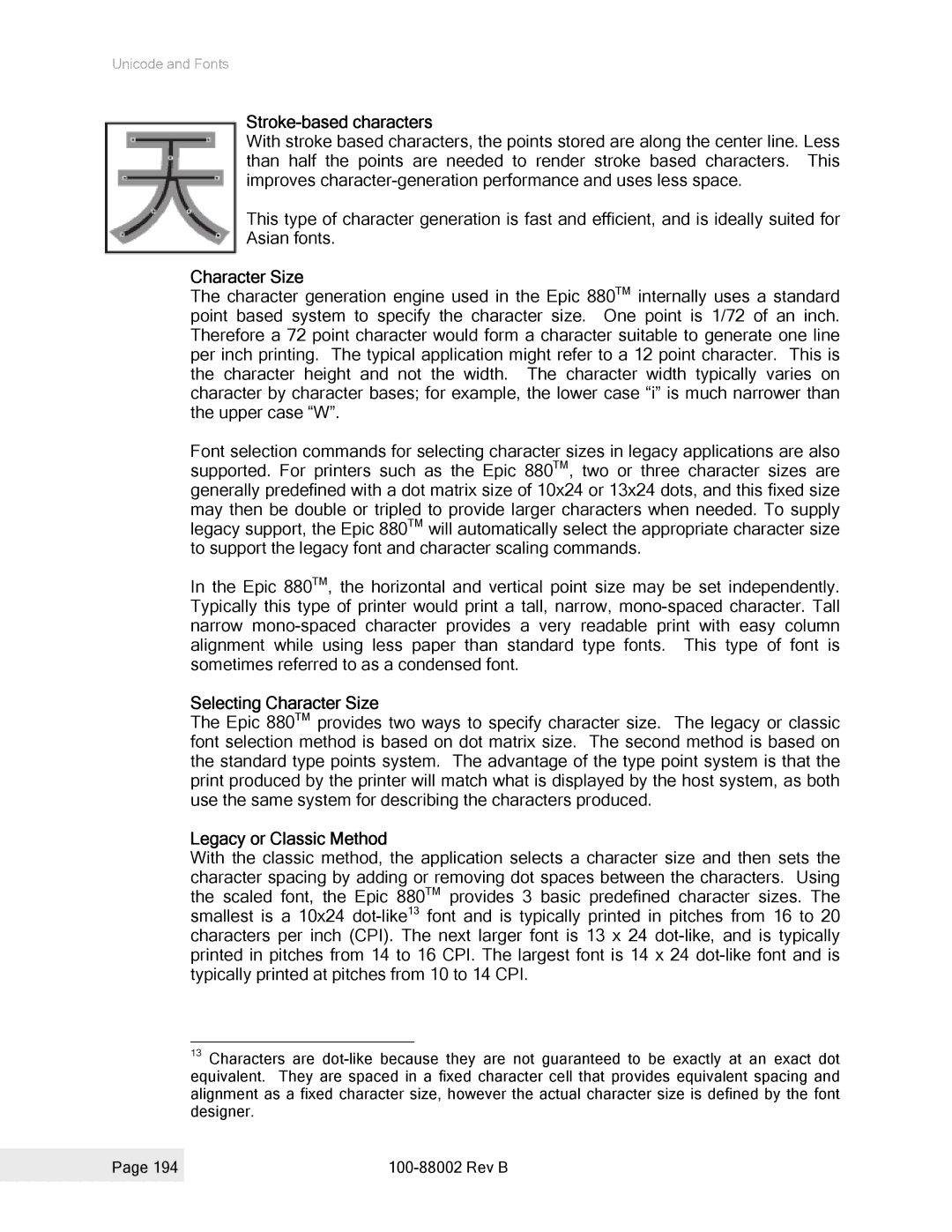
Unicode and Fonts
Stroke-based characters
With stroke based characters, the points stored are along the center line. Less than half the points are needed to render stroke based characters. This improves
This type of character generation is fast and efficient, and is ideally suited for
Asian fonts.
Character Size
The character generation engine used in the Epic 880TM internally uses a standard point based system to specify the character size. One point is 1/72 of an inch. Therefore a 72 point character would form a character suitable to generate one line per inch printing. The typical application might refer to a 12 point character. This is the character height and not the width. The character width typically varies on character by character bases; for example, the lower case “i” is much narrower than the upper case “W”.
Font selection commands for selecting character sizes in legacy applications are also supported. For printers such as the Epic 880TM, two or three character sizes are generally predefined with a dot matrix size of 10x24 or 13x24 dots, and this fixed size may then be double or tripled to provide larger characters when needed. To supply legacy support, the Epic 880TM will automatically select the appropriate character size to support the legacy font and character scaling commands.
In the Epic 880TM, the horizontal and vertical point size may be set independently. Typically this type of printer would print a tall, narrow,
Selecting Character Size
The Epic 880TM provides two ways to specify character size. The legacy or classic font selection method is based on dot matrix size. The second method is based on the standard type points system. The advantage of the type point system is that the print produced by the printer will match what is displayed by the host system, as both use the same system for describing the characters produced.
Legacy or Classic Method
With the classic method, the application selects a character size and then sets the character spacing by adding or removing dot spaces between the characters. Using the scaled font, the Epic 880TM provides 3 basic predefined character sizes. The smallest is a 10x24
13Characters are
Page 194 |
|
|
|
